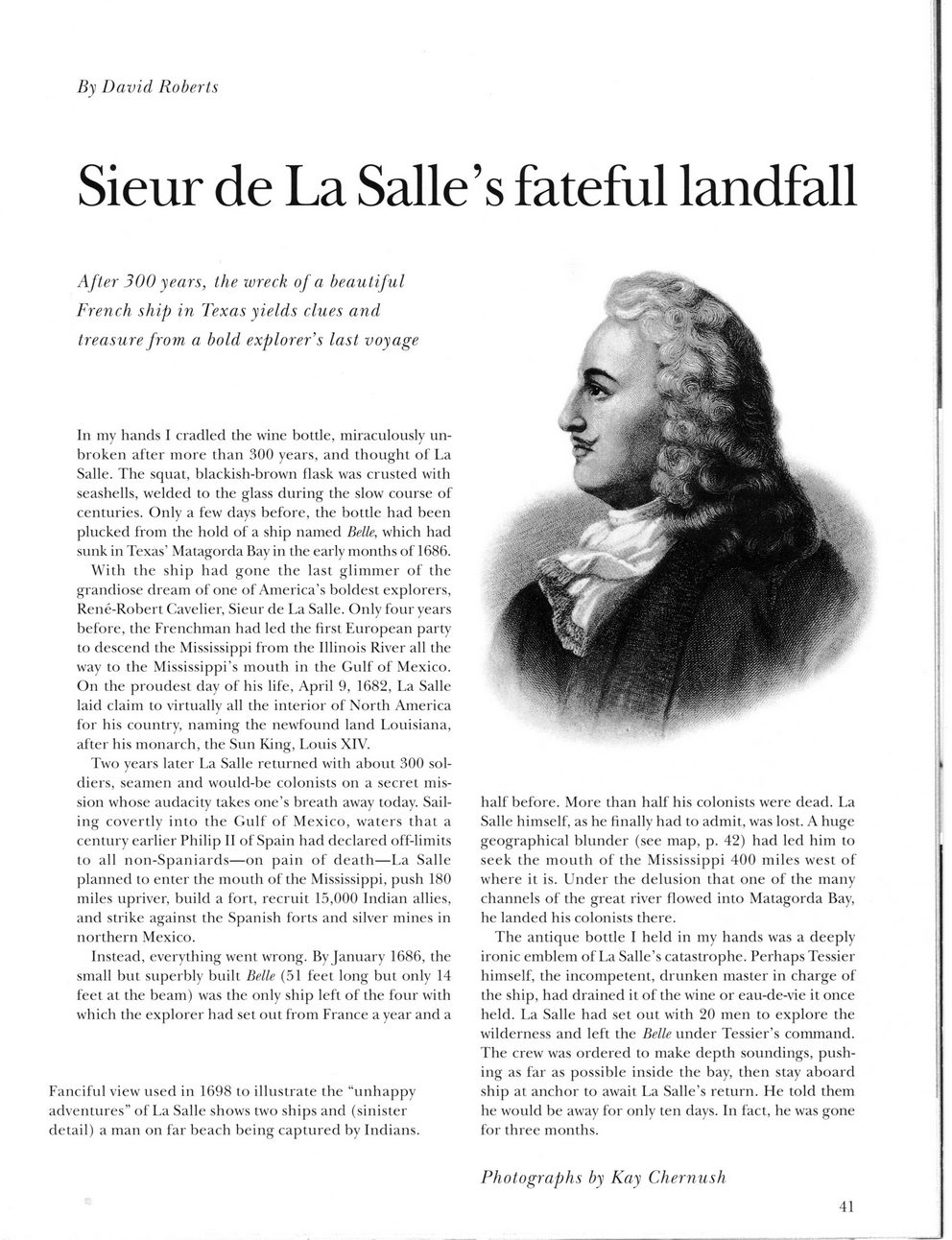This text was obtained via automated optical character recognition.
It has not been edited and may therefore contain several errors.
By David Roberts Sieur de La Salle?s fateful landfall After 300 years, the wreck of a beautiful French ship in Texas yields clues and treasure from a bold explorer?s last voyage In my hands I cradled the wine bottle, miraculously unbroken after more than 300 years, and thought of La Salle. The squat, blackish-brown flask was crusted with seashells, welded to the glass during the slow course of centuries. Only a few days before, the bottle had been plucked from the hold of a ship named Belle, which had sunk in Texas? Matagorda Bay in the early months of 1686. With the ship had gone the last glimmer of the grandiose dream of one of America?s boldest explorers, Rene-Robert Cavelier, Sieur de La Salle. Only four years before, the Frenchman had led the first European party to descend the Mississippi from the Illinois River all the way to the Mississippi?s mouth in the Gulf of Mexico. On the proudest day of his life, April 9, 1682, La Salle laid claim to virtually all the interior of North America for his country, naming the newfound land Louisiana, after his monarch, the Sun King, Louis XIV. Two years later La Salle returned with about 300 soldiers, seamen and would-be colonists on a secret mission whose audacity takes one?s breath away today. Sailing covertly into the Gulf of Mexico, waters that a century earlier Philip II of Spain had declared off-limits to all non-Spaniards?on pain of death?La Salle planned to enter the mouth of the Mississippi, push 180 miles upriver, build a fort, recruit 15,000 Indian allies, and strike against the Spanish forts and silver mines in northern Mexico. Instead, everything went wrong. By January 1686, the small but superbly built Belle (51 feet long but only 14 feet at the beam) was the only ship left of the four with which the explorer had set out from France a year and a Fanciful view used in 1698 to illustrate the ?unhappy adventures? of La Salle shows two ships and (sinister detail) a man on far beach being captured bv Indians. half before. More than half his colonists were dead. La Salle himself, as he finally had to admit, was lost. A huge geographical blunder (see map, p. 42) had led him to seek the mouth of the Mississippi 400 miles west of where it is. Under the delusion that one of the many channels of the great river flowed into Matagorda Bay, he landed his colonists there. The antique bottle I held in my hands was a deeply ironic emblem of La Salle?s catastrophe. Perhaps Tessier himself, the incompetent, drunken master in charge of the ship, had drained it of the wine or eau-de-vie it once held. La Salle had set out with 20 men to explore the wilderness and left the Belle under Tessier?s command. The crew was ordered to make depth soundings, pushing as far as possible inside the bay, then stay aboard ship at anchor to await La Salle?s return. He told them he would be away for only ten days. In fact, he was gone for three months. Photographs by Kay Chernush 41

LaSalle 002